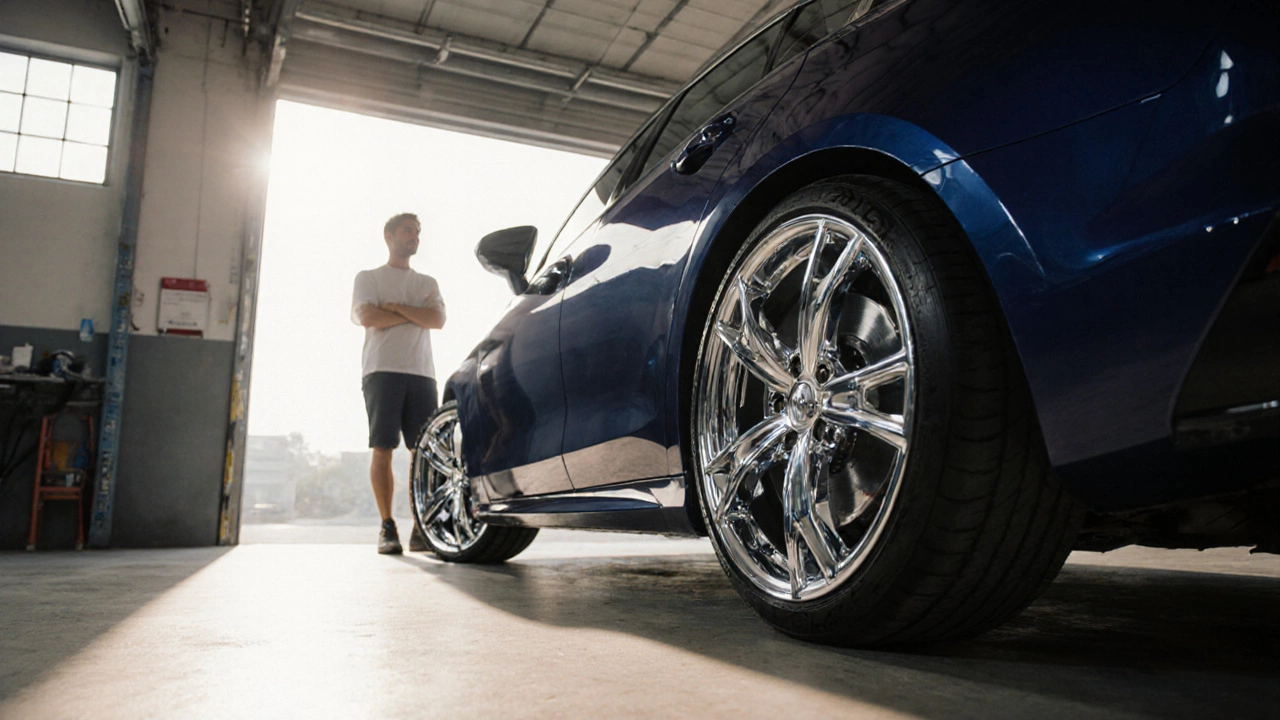Aftermarket Wheels – Everything You Need to Know
When talking about Aftermarket Wheels, custom‑made rims that replace the factory set to change a car’s look or performance. Also called custom wheels, they let you upgrade style, grip, and handling. Aftermarket wheels come in many forms, and three of the most common companions are Alloy Wheels, lightweight rims made from an aluminum‑based alloy, prized for strength and visual appeal, Wheel Spacers, thin metal plates placed between the hub and rim to widen track width and adjust fitment, and Wheel Sizes, the combination of diameter, width, and offset that determines which tires will safely mount. Understanding how these pieces fit together is the first step to a successful upgrade.
Why do drivers swap out stock rims? Most people want a fresh look, but the benefits go deeper. Aftermarket wheels can reduce unsprung weight, which helps the suspension react faster and improves braking distance. At the same time, the right rim size lets you fit lower‑profile tires for sharper cornering. However, the upgrade only works if the wheels are matched to the car’s suspension geometry, so proper fitment and alignment are essential. In short, aftermarket wheels require correct fitment, and proper alignment ensures safety and performance – a classic cause‑and‑effect relationship you’ll see echoed throughout the guides below.
Let’s break down Alloy Wheels a bit more. Their main attribute is weight: an alloy rim can be up to 30 % lighter than a comparable steel wheel, which translates to less rotating mass and quicker acceleration. They also resist corrosion better, keeping the car looking new longer. On the flip side, alloys can be more expensive and may crack under extreme impact. The trade‑off between cost, durability, and style is why many enthusiasts pick alloys for daily drivers and reserve steel for heavy‑duty use.
Wheel Spacers affect handling in a very direct way. By pushing the wheel outward, they widen the vehicle’s track, which can reduce body roll and improve cornering grip. Yet the extra leverage also stresses wheel bearings and suspension components, so installation must include proper torque settings and, often, a re‑check of wheel alignment. In many cases, spacers are used to clear brake calipers on larger-diameter wheels, showing how one modification can solve another fitment issue.
When it comes to Wheel Sizes, three attributes matter most: diameter, width, and offset. Diameter determines the overall height of the wheel and, combined with tire sidewall height, influences gearing and ride comfort. Width affects the tire’s contact patch; a wider wheel can hold a broader tire for better grip but may rub on fenders if not spaced correctly. Offset is the distance between the wheel’s mounting surface and its centerline; the right offset keeps the tire centered in the wheel well and prevents undue stress on suspension components. Matching these values to the vehicle’s specifications is the only way to avoid costly mistakes.
Installation isn’t just bolting a new rim on. After fitting the wheels, you should get a professional alignment to ensure the wheels sit at the correct camber, toe, and caster angles. Balancing each wheel eliminates vibration, while checking the torque on lug nuts prevents warping or loosening. Some regions also have legal limits on rim width and offset, so a quick compliance check can save you a ticket. When done right, the upgrade feels seamless – you’ll notice sharper steering, cleaner looks, and, often, a modest boost in fuel economy.
Below you’ll find a curated collection of articles that dive deeper into each of these topics. From DIY installation tips to detailed comparisons of alloy versus steel, the posts will give you the practical insights you need to choose, fit, and enjoy your new set of aftermarket wheels.

